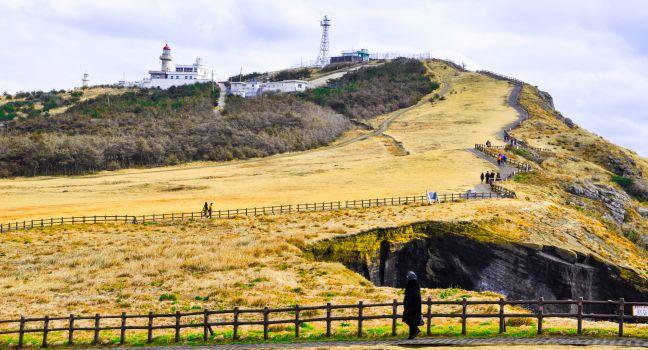Seongsan Ilchulbong (Sunrise Peak)
Arguably Jeju's most recognized tourist sight, Seongsan Ilchulbong (Sunrise Peak) is a dramatic tuff cone created around 5,000 years ago after an underwater volcanic explosion. Rising 600 feet out of the sea like a coastal fortress, the cone is ringed by dramatic cliffs sculpted by thousands of years of wind and waves, and capped by a grassy, bowl-shaped caldera. The peak was designated a UNESCO World Natural Heritage Site in 2007 thanks to its "outstanding aesthetic beauty" and geological significance.
It takes about an hour to hike the well-maintained path to the lip of the crater, where you can take in views of the caldera and the sea beyond. The best views of the peak, however, are to be had at nearby Gwangchigi Beach, especially at sunrise, when the peak is silhouetted against the rising sun. If you're lucky, it will also be low-tide, exposing the moss-covered volcanic rocks along the beach.




